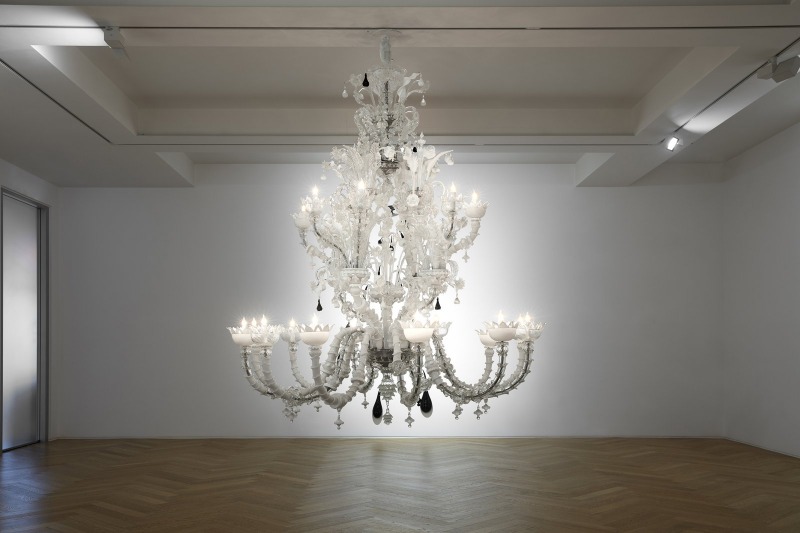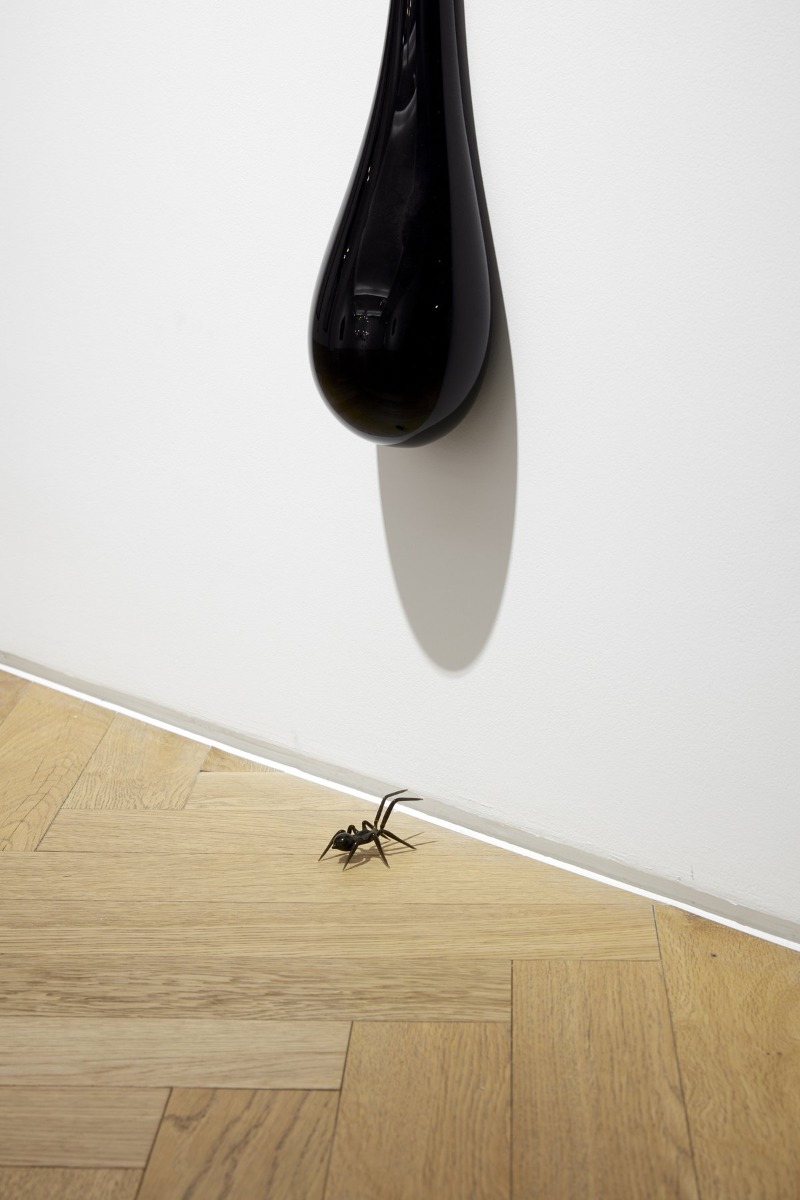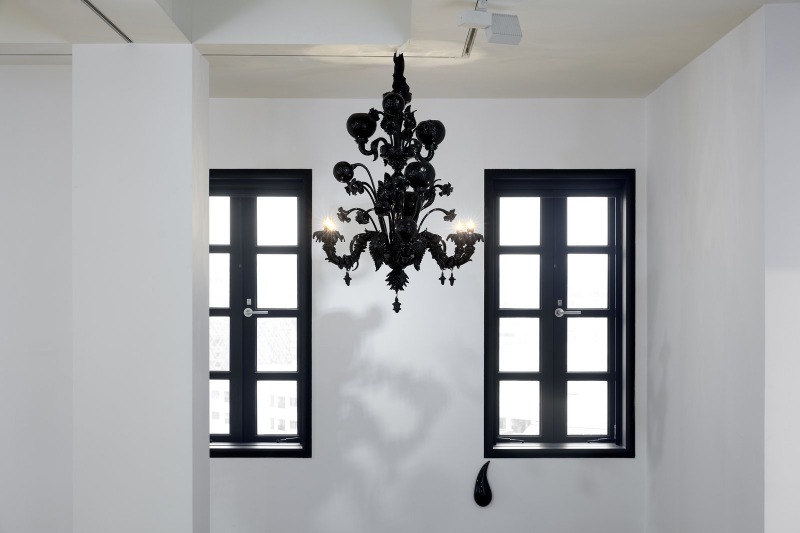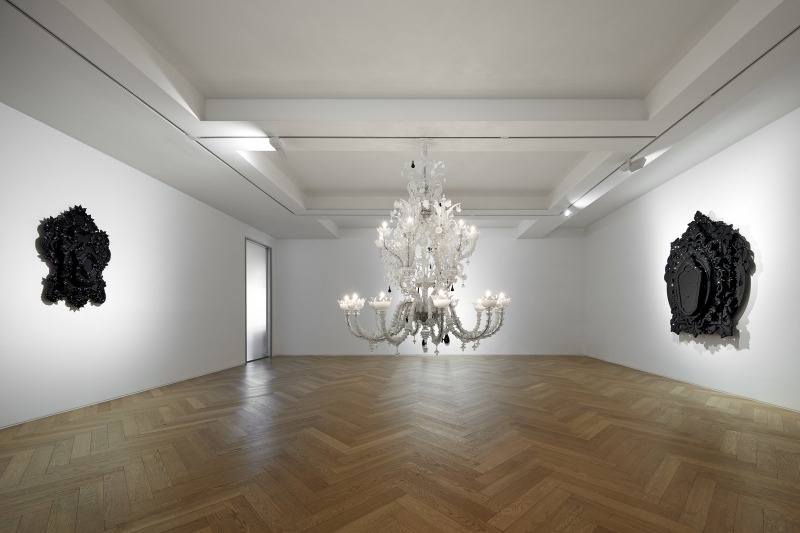
| Period| | 2020.03.10 - 2020.05.16 |
|---|---|
| Operating hours| | 11:00 - 19:00 |
| Space| | PACE GALLERY |
| Address| | 2/3F, 267 Itaewon-ro Yongsan-gu Seoul |
| Closed| | Mon. Sun. Holidays |
| Price| | Free |
| Phone| | 02-790-9388 |
| Web site| | 홈페이지 바로가기 |
| Artist| |
프레드 윌슨
|
정보수정요청



|
|
Exhibition Information




Seoul — Pace Gallery is pleased to present Fred Wilson’s solo exhibition in Korea with a small survey of the artist’s celebrated glass sculptures. Wilson’s use of glass has become a unifying element of his career ever since he first began to explore the possibilities of the medium nearly twenty years ago. Spanning over a decade of work, this exhibition will include his black-glass drips, ornate black mirrors, and Rezzonico-style chandeliers. Since 2001, Wilson has worked alongside prominent American glass blower Dante Marioni with whom he first explored the possibilities of black-colored glass. During this time, Wilson produced his first black glass drips. The reflective surface of the blown glass and the teardrop-like forms suggest liquids such as ink, oil, blood and tar, and are blown from red glass so dense that it appears black. Wilson has continued to make drip works including Untitled (Akua’ba) (2010), a multi-piece installation topped with a black-glass sculpture cast from a traditional ritual fertility doll of the Asante people in Ghana. The glass doll extends from the wall looking down on a series of black drips that appear to cascade towards the floor—a nod to the fecundity associated with the African doll and the spread of the notion of the “Global African.” As Wilson explains, “Since the late 20th century the concept of the color black has shifted. Africans and those of the African Diaspora have embodied the color and flipped the negative meaning on its head and now view it as a powerful symbol of solidarity, born of our shared history and culture. My works in black are a mixture of positive affirmation, with a clear-eyed understanding of the racist tropes of the past.” Wilson has also explored more complex representations and sculptures. For his exhibition Speak of Me as I Am (2003) for the United States Pavilion at the 50th Biennale di Venezia, Wilson commissioned artisans on the island of Murano to produce a large-scale chandelier in an eighteenth-century Venetian Rezzonico style. Murano has been the epicenter of Venetian glassmaking since the 13th century. Titled Chandelier Mori (2003), Wilson’s sculpture marked the first time in the history of Venetian glassmaking that a Murano chandelier was made in black glass. Over the ensuing seventeen years, he has created additional chandeliers and a variety of black Murano glass mirrors that build on his examination of objects, their public uses, and material histories. “The works I create are in turn affected not only by my shifting ideas from place to place,” he writes, “but also by my ongoing interest in Minimalism and Conceptualism, social issues, notions of race, and psychological states of alienation and denial.” Since his Venice installation, Wilson has found inspiration in Shakespeare’s Venetian tragedy Othello. Spoken lines, characters, and stage directions are used as titles, or quoted within works, and express, through fragmentation, historic representations of blackness, notions of loss, the realities of erasure, and the politics of power. Works included in this exhibition—such as I Saw Othello’s Visage in His Mind (2013)—exemplify the artist’s ongoing engagement with the decorative arts and the themes of Othello in large-scale mirror. The black mirrors are comprised of highly detailed black Murano glass often in layers, with the mirrors’ verso painted black. This creates a phantomlike reflection that prompts consideration of blackness—and so the complexities of representation and identity—in the viewer as their likeness is blackened upon reflection. The theme of Othello continues with Wilson’s most recent chandelier A Moth of Peace (2018), the title pulling from a line in which Desdemona refers to herself as a “moth of peace” left alone when Othello is sent off to war. This sense of lightness marked with elements of melancholy is reflected in the physical qualities of the chandelier, which is made of clear and milky white glass punctuated with contrasting black elements and decorated with traditional flower and leaf shapes. Fred Wilson will be on view from March 6 through May 16, 2020 at Itaewon-ro 262, Yongsan-gu in Seoul. In addition, Wilson’s Afro Kismet—originally produced for the 15th Istanbul Biennial in 2017—will be exhibited at the Gibbes Museum of Art, Charleston, opening May 15, 2020, in partnership with the Spoleto Festival USA. Wilson has been invited to participate in Dak’Art, the biennial in Dakar, Senegal, also opening May 2020. Fred Wilson (b. 1954, Bronx, New York) challenges assumptions of history, culture, and race, deconstructing the presentation of objects and cultural symbols. Beginning with his groundbreaking exhibition Mining the Museum (1992) at the Maryland Historical Society, he has staged installations of appropriated artworks and artifacts from museum collections. His provocative juxtapositions encourage viewers to question historical narratives and conventions of display, revealing undercurrents of ownership and privilege normalized by institutional practices. In 2001, Wilson began to expand his studio practice, producing ornate black mirrors, chandeliers, and other glass objects. His flag series includes paintings and panels based on the iconography of flags from Africa and the African diaspora. Wilson’s cultural interventions and studio production both remain linked to his critiques, uncovering marginalized history, negotiating identity, and questioning the politics of display. Pace is a leading contemporary art gallery representing many of the most significant international artists and estates of the twentieth and twenty-first centuries. Under the leadership of President and CEO Marc Glimcher, Pace is a vital force within the art world and plays a critical role in shaping the history, creation, and engagement with modern and contemporary art. Since its founding by Arne Glimcher in 1960, Pace has developed a distinguished legacy for vibrant and dedicated relationships with renowned artists. As the gallery approaches the start of its seventh decade, Pace’s mission continues to be inspired by a drive to support the world’s most influential and innovative artists and to share their visionary work with people around the world. Pace advances this mission through its dynamic global program, comprising ambitious exhibitions, artist projects, public installations, institutional collaborations, performances and interdisciplinary projects through Pace Live, and curatorial research and writing. Today, Pace has seven locations worldwide: two galleries in New York—including its newly opened headquarters at 540 West 25th Street, and an adjacent 8,000 sq. ft. exhibition space at 510 West 25th Street—as well as galleries in Palo Alto, London, Geneva, Hong Kong, and Seoul.
